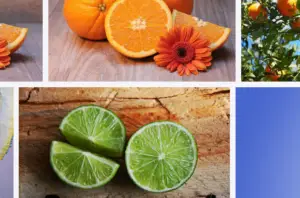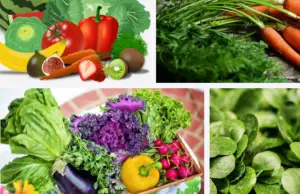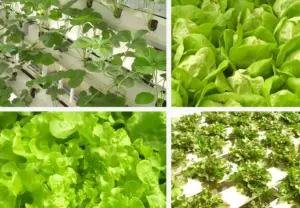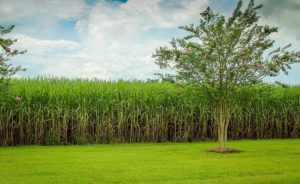What is Florida known for Agriculture? | What is Florida known for Producing?

- By
- Aparna Patel
- |
- 3 Apr, 2023
- |

Florida is a state that is widely recognized for its beautiful beaches, theme parks, and warm weather. However, it is also a state that boasts a rich agricultural industry, providing the nation with an abundance of fresh fruits and vegetables, livestock products, and nursery and greenhouse products.
In this blog post, we will explore what Florida is known for in terms of agriculture, and take a closer look at some of the crops and products that are produced in the state.
We will also highlight one particular vegetable that Florida is known for producing. Join us as we delve into the agricultural industry of the Sunshine State.
Florida is known for its diverse agricultural industry, which includes crops such as oranges, grapefruits, strawberries, tomatoes, watermelons, sugarcane, and bell peppers, among others.
One vegetable that Florida is particularly known for is sweet corn. Florida sweet corn is available from late winter through early summer, and is grown in different regions of the state.
Other popular vegetables grown in Florida include tomatoes, bell peppers, cucumbers, squash, and beans. Florida’s mild climate and fertile soils make it an ideal location for growing a wide variety of crops, and the state’s farmers produce a significant portion of the nation’s fresh fruits and vegetables.
Florida is known for its diverse agricultural industry. The state’s warm and humid climate, fertile soils, and abundant water resources make it an ideal location for growing a wide variety of crops.
Some of the most important agricultural products grown in Florida include:
- Citrus fruits: Florida is the largest producer of oranges, grapefruits, and tangerines in the United States.Citrus fruits are an important agricultural crop in Florida, contributing significantly to the state’s economy and providing employment to many people. The primary citrus fruits grown in Florida include oranges, grapefruits, tangerines, and limes.

Florida is the largest producer of citrus fruits in the United States, accounting for about 60% of the country’s total production.
The citrus industry in Florida generates an estimated $8.6 billion in economic activity and supports more than 46,000 jobs. Florida’s citrus production is also a major contributor to the state’s overall agricultural sector, which generates about $130 billion in economic activity and employs over 2 million people.
However, the industry has faced challenges in recent years due to diseases such as citrus greening, which has caused significant losses in production and revenue. Despite these challenges, the citrus industry remains an important part of Florida’s economy and cultural heritage.
- Vegetables: Florida is a major producer of fresh market tomatoes, bell peppers, sweet corn, cucumbers, and snap beans.
 Vegetables are another important agricultural crop in Florida, contributing significantly to the state’s economy and providing employment to many people. The primary vegetables grown in Florida include tomatoes, sweet corn, peppers, cucumbers, and squash.
Vegetables are another important agricultural crop in Florida, contributing significantly to the state’s economy and providing employment to many people. The primary vegetables grown in Florida include tomatoes, sweet corn, peppers, cucumbers, and squash.
Florida is one of the largest producers of vegetables in the United States, with a wide variety of crops grown throughout the year due to the state’s mild climate.
The vegetable industry in Florida generates an estimated $1.7 billion in economic activity and supports more than 20,000 jobs. Vegetable production is also an important part of the state’s overall agricultural sector, which is a major contributor to the state’s economy.
However, the industry faces challenges such as weather fluctuations, pest management, and competition from imports. Despite these challenges, the vegetable industry remains a vital part of Florida’s economy and a major contributor to the state’s food supply.
- Livestock: Florida is home to a large cattle industry and is a major producer of beef and dairy products.Livestock production is an important sector of agriculture in Florida, contributing significantly to the state’s economy and providing employment to many people. The primary livestock raised in Florida include cattle, dairy cows, hogs, and poultry.

Cattle production is the largest sector of Florida’s livestock industry, with more than one million head of cattle in the state. Florida’s beef cattle industry generates an estimated $1 billion in economic activity and supports thousands of jobs.
Dairy production is another important sector, with more than 125,000 dairy cows in the state. The dairy industry generates an estimated $460 million in economic activity and supports thousands of jobs.
Poultry production is also significant, with more than 27 million broiler chickens and 7 million laying hens in the state. The poultry industry generates an estimated $265 million in economic activity and supports thousands of jobs.
In addition to cattle, dairy cows, hogs, and poultry, Florida also has significant production of aquaculture products such as clams, oysters, and shrimp. The aquaculture industry generates an estimated $90 million in economic activity and supports thousands of jobs.
The livestock industry in Florida faces challenges such as disease outbreaks, feed costs, and weather fluctuations. Despite these challenges, the industry remains an important part of the state’s economy and a major contributor to the state’s food supply.
- Nursery and greenhouse products: Florida is a major producer of ornamental plants, including flowering plants, foliage plants, and trees.
 Nursery and greenhouse products are an important agricultural sector in Florida, contributing significantly to the state’s economy and providing employment to many people. The primary nursery and greenhouse products produced in Florida include ornamental plants, foliage, bedding plants, and woody ornamentals.
Nursery and greenhouse products are an important agricultural sector in Florida, contributing significantly to the state’s economy and providing employment to many people. The primary nursery and greenhouse products produced in Florida include ornamental plants, foliage, bedding plants, and woody ornamentals.
Florida is one of the largest producers of nursery and greenhouse products in the United States, with more than 1,000 nurseries and greenhouse operations in the state. In 2020, the industry generated an estimated $1.3 billion in economic activity and supported more than 12,000 jobs.
The nursery and greenhouse industry in Florida benefits from the state’s mild climate, which allows for year-round production and makes it a major supplier of plants for other states. The industry also benefits from its proximity to major markets, including South Florida, where there is a high demand for landscaping and ornamental plants.
The industry faces challenges such as competition from other states and countries, as well as pests and disease outbreaks. Despite these challenges, the nursery and greenhouse industry remains an important part of Florida’s economy and a major supplier of plants to other regions of the country.
- Sugarcane: Florida is one of the largest producers of sugarcane in the country, and produces a significant portion of the nation’s sugar.
 Sugarcane is an important agricultural crop in Florida, contributing significantly to the state’s economy and providing employment to many people. Florida is the largest producer of sugarcane in the United States, accounting for about 50% of the country’s total production.
Sugarcane is an important agricultural crop in Florida, contributing significantly to the state’s economy and providing employment to many people. Florida is the largest producer of sugarcane in the United States, accounting for about 50% of the country’s total production.
Sugarcane is primarily grown in South Florida, with major producing areas in Palm Beach, Hendry, and Glades counties.
The sugarcane industry in Florida generates an estimated $3.3 billion in economic activity and supports more than 12,500 jobs. The industry is also a major contributor to the state’s overall agricultural sector, which generates about $130 billion in economic activity and employs over 2 million people.
However, the industry faces challenges such as competition from imported sugar, labor shortages, and environmental concerns related to water use and nutrient runoff. Despite these challenges, the sugarcane industry remains an important part of Florida’s economy and cultural heritage.
In addition to these products, Florida also produces a variety of other crops, including strawberries, watermelons, peaches, blueberries, and peanuts, among others.
The state’s agricultural industry is an important contributor to the state’s economy, providing jobs and generating billions of dollars in revenue each year.
Read more
- What fruit is Florida known for? | Local & Delicious Florida Fruits
- What fruit trees are native to Florida?
- What is California known for fruit?
- What city are the redwoods in California?
- What is Florida famous for historically?
What vegetable is Florida known for?
Florida is known for growing a variety of vegetables due to its warm and humid climate, fertile soils, and abundant water resources. Some of the vegetables that Florida is particularly known for include:
- Sweet corn: Florida is one of the largest producers of sweet corn in the United States. It is available from late winter through early summer.
- Tomatoes: Florida is a major producer of fresh market tomatoes, and produces more than any other state from November through June.
- Bell peppers: Florida is a major producer of bell peppers, which are available from November through April.
- Cucumbers: Florida is a significant producer of cucumbers, which are available from November through April.
- Squash: Florida is a major producer of squash, including yellow squash and zucchini, which are available from November through June.
- Beans: Florida is a significant producer of snap beans, which are available from October through June.
Other vegetables that are also grown in Florida include eggplant, okra, lettuce, cabbage, and broccoli, among others.
Q: What is Florida known for in terms of agriculture?
A: Florida is known for its diverse agricultural industry, which includes crops such as citrus fruits, sweet corn, tomatoes, bell peppers, cucumbers, and sugarcane, among others.
Q: What vegetable is Florida known for?
A: Florida is particularly known for sweet corn, which is available from late winter through early summer. However, the state also produces a variety of other vegetables, including tomatoes, bell peppers, cucumbers, squash, and beans.
Q: Why is Florida a good location for agriculture?
A: Florida’s warm and humid climate, fertile soils, and abundant water resources make it an ideal location for growing a wide variety of crops.
Q: What other crops are grown in Florida?
A: In addition to citrus fruits and vegetables, Florida also produces a variety of other crops, including strawberries, watermelons, peaches, blueberries, and peanuts, among others.
Q: What is the economic impact of Florida’s agricultural industry?
A: Florida’s agricultural industry is an important contributor to the state’s economy, providing jobs and generating billions of dollars in revenue each year.
Q: What are some challenges faced by Florida’s agricultural industry?
A: Florida’s agricultural industry faces a number of challenges, including competition from other states and countries, weather-related risks such as hurricanes and droughts, and environmental concerns such as water quality and land use.
Search Posts
Latest posts
-
4 Mar, 2024
Can I accidentally miss the in-flight food?
-
5 Mar, 2024
How to avoid drinking vodka?